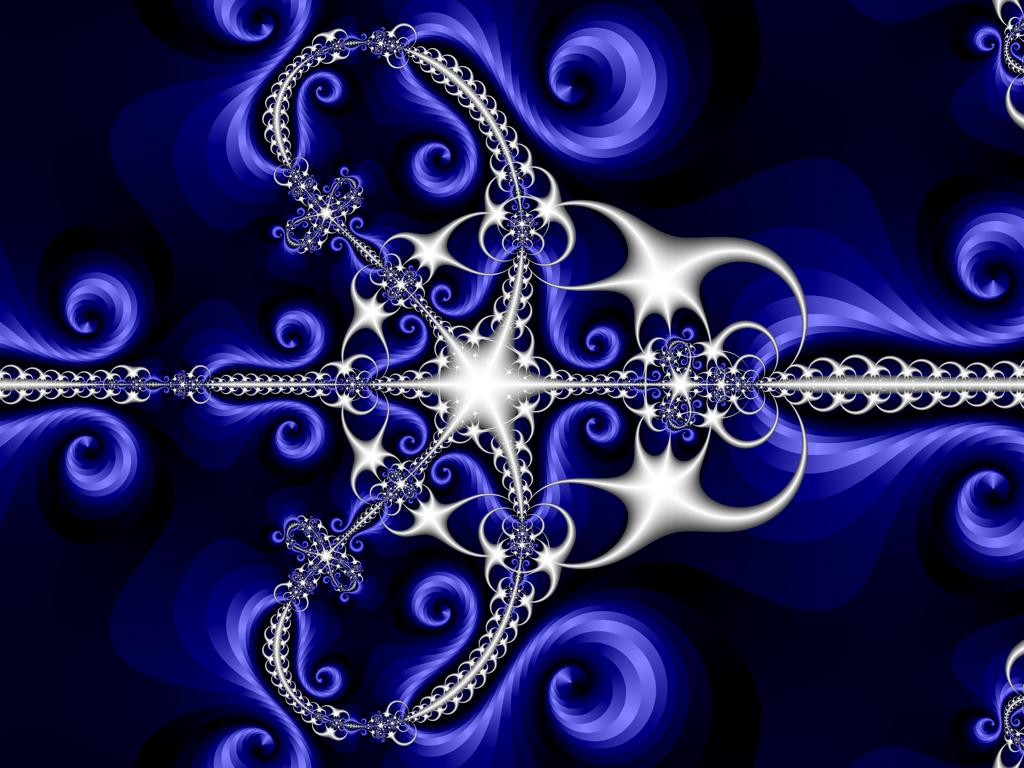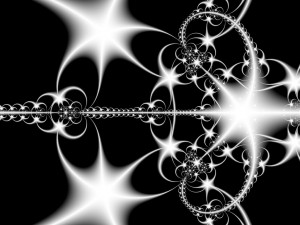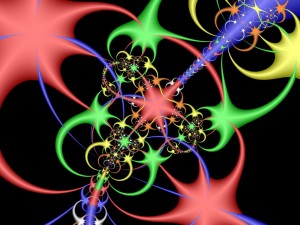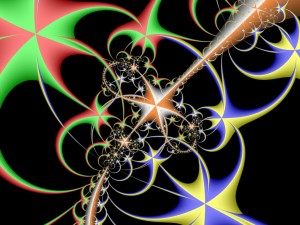This fractal is a Julia set based on Newton’s method applied to the formula (z^3 – 1)/z. The resulting expression has the constant c = -1.04 added to it. The “stalks” orbit trap was used. Angular decomposition was used for the exterior. I usually don’t combine these two techniques because they produce such different effects that they tend to clash. Although I don’t think they totally integrate with each other even in this case, I was able to keep the exterior coloring from stepping all over the stalk regions by applying non-black coloring to only part of the dwell range. Anyway, some members of my family seem to like this a lot.
As the title “Starry 4” implies, this is a member of a series. Let me take the liberty of showing you the genesis and intermediate steps leading to this image.
[NOTE! Click on images below to see image in full size.]
Having the “stalk” option on, I was examing the Newton fractal of this formula using the Preview window. The fractal below popped up and I clicked the mouse button. Usually fiinding an alternate coloration would be the next step, but this is one of those fractals that show so much variety and complication in its inherent structure that I am reluctant to add color for fear of obscuring the details that I find most compelling. I entitled this fractal “Starry” because it invokes for me the impression of a dense constellation of stars.
The most compelling thing about this fractal is the complex detail gathering at various ponts on the main stalks. A natural next step was to look at a close up of one of these “clusters.” I also switched to a “color by orbit” scheme. to see what that would look like. The result was “Starry 2.”
I tried a quick alternate coloring by choosing “by origin” rather than “by orbit.” The following interesting variation resulted:
Parameter files for the images above:




